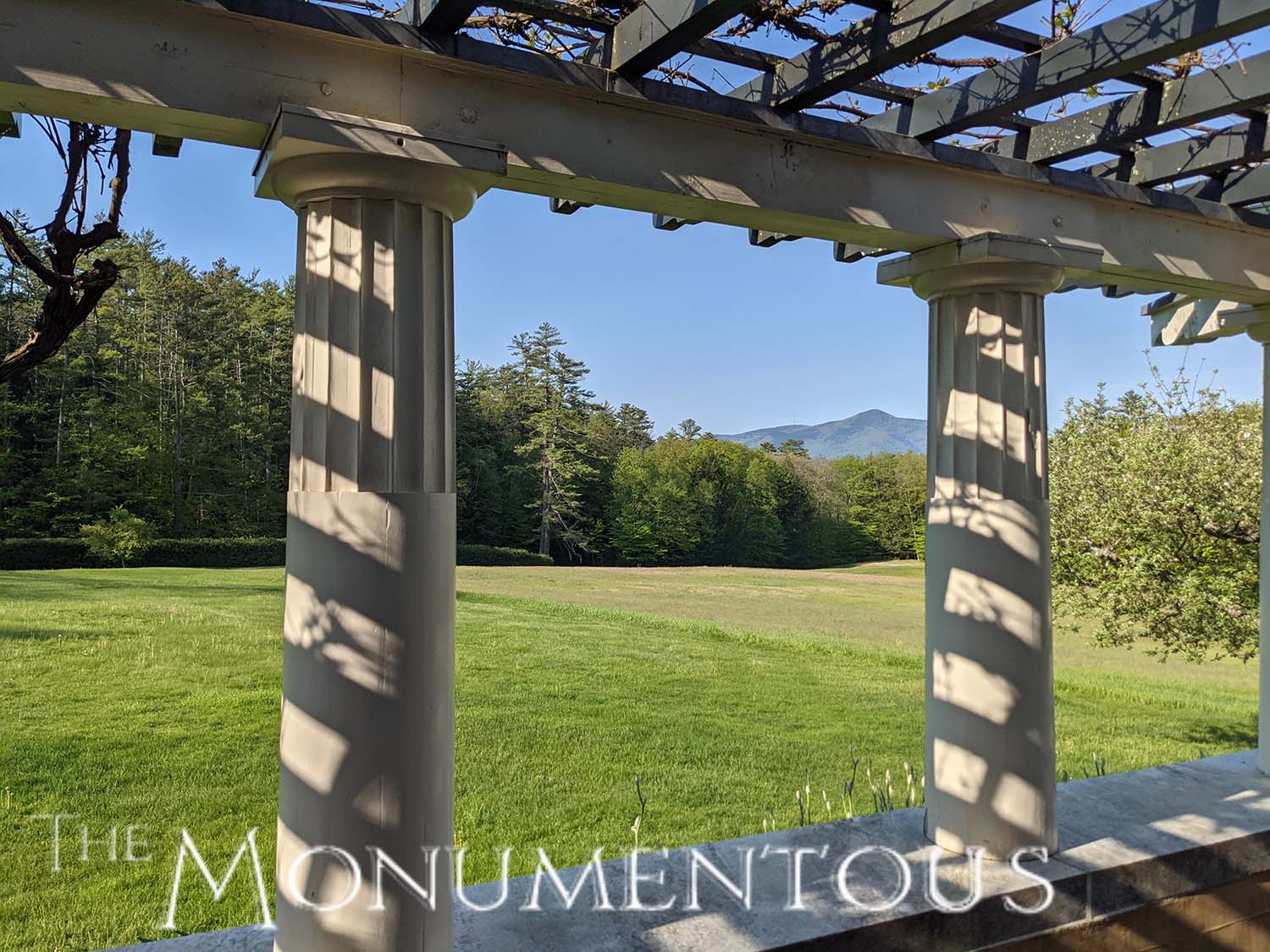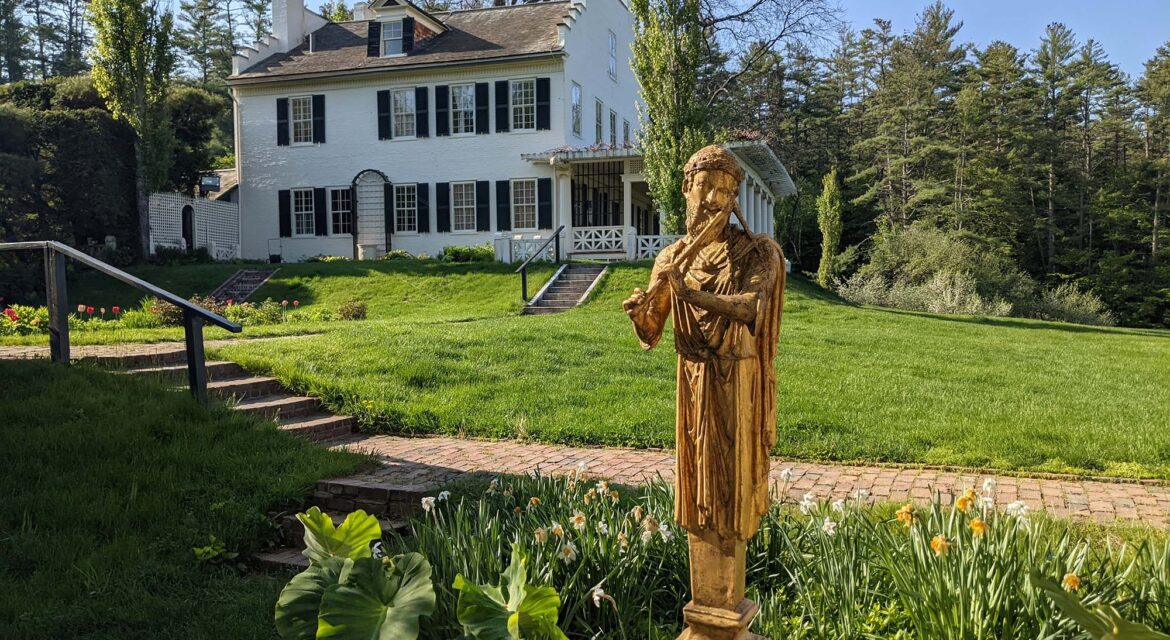 Preserving the home, gardens, and studios of the famous sculptor Augustus Saint-Gaudens, visitors can contextualize an important American era at the Saint-Gaudens National Historical Park in Cornish, New Hampshire. The history and artistic genius that is associated with one of the most prolific sculptors of the 19th century can be experienced via numerous features all across the site, showcasing what it can mean for a space to create engagement with audiences on multiple levels.
Preserving the home, gardens, and studios of the famous sculptor Augustus Saint-Gaudens, visitors can contextualize an important American era at the Saint-Gaudens National Historical Park in Cornish, New Hampshire. The history and artistic genius that is associated with one of the most prolific sculptors of the 19th century can be experienced via numerous features all across the site, showcasing what it can mean for a space to create engagement with audiences on multiple levels.

From “Aspet” to Historic Landmark
 Augustus Saint-Gaudens was an American sculptor who was said to embody the ideals of the American Renaissance. He was recognized as the leading American sculptor of his day with works that continue to attract the attention of audiences. During the 19th and early 20th centuries he created over 150 works of art.
Augustus Saint-Gaudens was an American sculptor who was said to embody the ideals of the American Renaissance. He was recognized as the leading American sculptor of his day with works that continue to attract the attention of audiences. During the 19th and early 20th centuries he created over 150 works of art.
Saint-Gaudens lived in a variety of places throughout his life but in 1891 bought an estate in Cornish which he would name “Aspet” in honor of his father’s birthplace in France. He used the location as his summer home for many years until moving to it permanently in 1900 where he remained until his death in 1907.
His notoriety compelled the transfer of the estate to a non-profit organization after his wife died, but it was the declaration of the site as a National Historic Landmark in 1962 that compelled the additional transfer of the location to the National Park Service (NPS) in 1965.
Saint-Gaudens National Historical Park contains historic buildings like the Little Studio as well as modern ones like the Visitor Center & Museum Shop. However, the most notable aspect of the space are the reproductions of works by Saint-Gaudens that have been placed throughout the grounds. These reproductions enable audiences to experience the work of Saint-Gaudens and the context of the American Renaissance in a whole new manner, all in the midst of the natural beauty of the New Hampshire countryside.

A Series of Outdoor Rooms
Over 100 of Saint-Gauden’s works both large and small are exhibited at Saint-Gaudens National Historical Park. Located inside and outside across the estate, these pieces range in size from his designs for tiny coins to the massive Abraham Lincoln: The Man sculpture.
 The entire space is landscaped with hedges and terraced gardens to give audiences a sense of the history all of these pieces represent. The grounds have been called an outdoor studio as well as a series of outside rooms that are designed to display one or more of his sculptures in unique and compelling ways.
The entire space is landscaped with hedges and terraced gardens to give audiences a sense of the history all of these pieces represent. The grounds have been called an outdoor studio as well as a series of outside rooms that are designed to display one or more of his sculptures in unique and compelling ways.
These rooms contain replica of pieces like Farragut Monument, which was Saint-Gauden’s first public monument that commemorated Civil War Admiral David Glasgow Farragut, as well as the Shaw Memorial, which he worked on for 14 years before it was completed. Other pieces on display include the Adams Memorial and his statue of Diana.
These pieces are interspersed amidst a natural setting that provides a magnificent view of Mt. Ascutney in Vermont along with 1.5 miles of nature trails. This combination along with the resources available in the Visitor Center & Museum Shop have enabled visitors to experience the artistic past and serene present of New Hampshire in a way that continues to attract the attention of audiences from across the world.

Celebrating the History of an Era
 Being New Hampshire’s only national park has provided Saint-Gaudens National Historical Park with a certain degree of notoriety, but the history that it celebrates is about something much more profound. An area that might have been lost or developed in a wholly different way has instead been preserved, enabling the site to serve as an attraction in the present while strengthening a legacy that will extend into the far future.
Being New Hampshire’s only national park has provided Saint-Gaudens National Historical Park with a certain degree of notoriety, but the history that it celebrates is about something much more profound. An area that might have been lost or developed in a wholly different way has instead been preserved, enabling the site to serve as an attraction in the present while strengthening a legacy that will extend into the far future.

